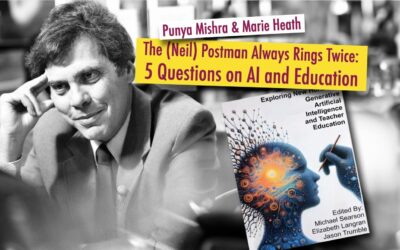In a couple of previous posts I had talked about the idea of postdiction (see the posts here and here). The argument being that good teaching (among a long list of other good things) is postdictable, i.e. it walks the line between predictability and chaos, and most importantly makes sense post hoc. To make my point I had posted a couple of videos that were good examples of being postdictable.
Closely connected to the idea of postdictable is the idea of creating anticipation and suspense. Once again other artists (particularly those working in temporal media such as film, and advertising) seem to have grasped the importance of this earlier than educators. Good film-makers can create suspense out of pretty much the flimsiest of materials. Think of the first scenes from Tarantino’s Reservoir Dogs. The way the scene builds tension out of a disagreement over whether or not to tip is pitch perfect. There is more tension in that scene than in dozens of other “suspense” thrillers.
However making suspense work is difficult. Navigating this line between predictability and tension over the unknown is a fine art. (This is where, of course, the connection with postdictability becomes most clear.)
Check out the two videos below, which highlight just how fine the line is between succeeding at creating suspense and anticipation and failing to do so. Both of these videos are interesting and well made – both have pace and rhythm but one of them builds anticipation while the other just happens. One tells a story, the other doesn’t.
But before going on further, here are the two videos. Watch both of them and ask yourself which one works and which one doesn’t?
Here’s one…
Blue Thousand and One from Blue Man Group HD on Vimeo.
… and here’s another:
Music Painting by JUL & MAT from JUL & MAT on Vimeo.
So what do you think? Both these videos were cool to watch – but don’t you think the one from the Blue Man Group a tad more interesting, both in its buildup and its dénouement. Even within its its short time frame, the video sets up a narrative arc and creates, something akin to aclassical dramatic structure. In contrast the second video, though visually interesting through out, loses steam somewhere half-way through. The action begins to seem repetitive and the movie lacks a narrative thrust. It lacks drama.
So what does this mean for teaching?
First, everything we do as educators needs a larger goal (the big picture as it were). Too often we get lost in the minutia of of the project and forget the broader, overarching frame. The structure of our lessons, our semester, our mini-activities needs to have a larger narrative thrust, a dramatic flow. A beginning, a middle and an end. A good science activity can have them all. So can a well designed social studies activity.
Second, every thing we do as educators needs to be subservient to meeting that larger goal. The Blue Man group movie works because each frame (and musical note) is part of a larger story being played out in front of us. Not a frame is wasted. In contrast, you could take away a chunk of the second and I doubt anybody would even notice. This is design for anticipation. This is design for postdiction. As educators this means that we can’t give them stupid-work (like most seat work at school) but rather every assignment needs to inform the larger picture and in turn be informed by it.
Don’t you think that as educators need to pay more attention to building anticipation and suspense in our students?




pre-processed not pre-processes 🙂 sorry…
Yes I do think that as educators we need to care more about building anticipation and suspense in our students… I feel that too often we try to fill them (and we are expected to do so) with nicely structured and pre-processes knowledge that hardly would correspond to real authentic problems… thus, instead of entertaining their curiosity and sense of inquiry, we entertain them, like TV does (in the best case), or we bore them to death, like a non-believing preacher would (in the worst case). In both cases, students don’t have to think too much, because they can do their part of the “job” by simply absorbing the pre-processes knowledge and will pass the exams (or what ever evaluation we have) by simply recalling what they have temporarily stored somewhere in their no-so-long-term-memory.
“We teach people how to remember, we never teach them how to grow.”
Oscar Wilde – Irish dramatist, novelist, & poet (1854 – 1900)
Supporting people in their own grow is certainly also a wicked problem, but at least it defines and serves a larger goal for education.